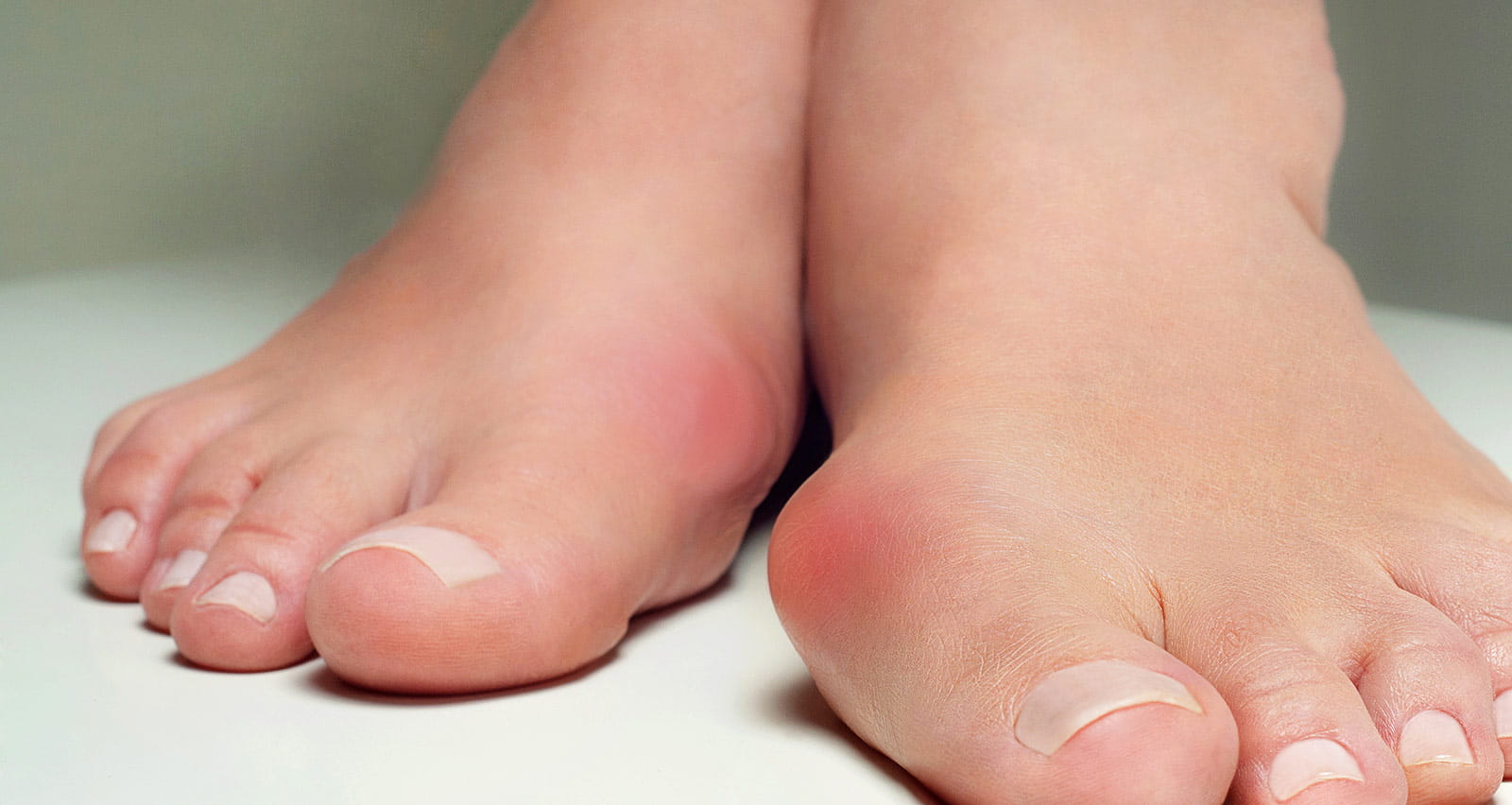
Orthopedic Expertise for the Treatment of Bunions
A bunion, also known as hallux valgus in medical terms, is a bony bump that forms at the base of the big toe. They occur when some of the bones in the foot shift from their normal position, causing the big toe to pull toward the smaller toes, forcing the joint at the base of the big toe to stick out.
Bunions are often just a cosmetic problem, but in some people they can become painful and lead to other issues like corns and calluses where the toes rub together.
Schedule an Appointment
The orthopedic specialists at University Hospitals have the advanced skills and experience to treat all foot and ankle conditions, including bunions. To schedule an appointment, call 216-220-9088 or schedule online.
Causes and Risk Factors for Bunions
Bunions are extremely common and occur far more frequently in women than men. This is likely because women’s footwear often features a narrow toe box and high heels. When shoes like this are worn regularly, they put prolonged pressure on the feet and compress the toes, increasing the risk for bunions to develop.
There is also a genetic component – bunions often run in families, possibly due to an abnormal alignment of the foot bones that is present at birth.
Potential Complications of Bunions
Beyond cosmetic concerns, bunions only present a minor inconvenience for most people. For example, it can be difficult to find shoes that fit comfortably and don’t further aggravate the condition. However, in some cases, additional symptoms may develop that require medical attention, including:
- Worsening pain
- Chronic swelling, redness or raw skin around the big toe joint
- Decreased mobility of the foot and toes
- Skin infections
Diagnosis and Treatment of Bunions
The visual characteristics of bunions are easily identified and a healthcare provider can usually diagnose a bunion by simply looking at the foot. An X-ray might be done but typically isn’t necessary unless corrective surgery is being considered.
Unless complications are reported, most recommended bunion treatments are conservative, lifestyle strategies to manage pain and prevent worsening of the condition. These may include:
- Properly fitted shoes with a wide toe box that does not compress the toes
- Bunion pads or cushions to reduce friction while wearing shoes
- Padded shoe inserts or prescription orthotics
- Devices called spacers to align and separate the first and second toes (available in most drug stores)
If the pain is substantial, your doctor may prescribe oral or topical medications. Sometimes, cortisone shots may be an option.
Corrective Bunion Surgery
Surgery to treat bunions is rarely recommended unless conservative treatments have failed to manage pain and symptoms. If the bunion is causing excessive pain, difficulty walking or chronic skin infections and inflammation, your healthcare provider may advise a corrective surgical procedure called bunionectomy.
This procedure is quite complex and involves realigning the bones of the foot and big toe to remove the bump. It often involves the removal of bone and soft tissue and the repair of ligaments, tendons and nerves. Recovery from bunionectomy can be lengthy and not everyone will experience a significant reduction of pain and other symptoms.
If you are considering bunionectomy, we recommend you have an in-depth conversation with your doctor about your goals and expectations from the procedure.
Make an Appointment
Our orthopedic experts offer in-person and virtual visits. Call 216-220-9088 or schedule your visit online today.


